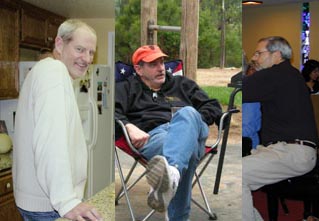We’re in the process here, looking at all 5 steps over the next couple of weeks. Step 1 was an overview, step 2 was about fundamentals, step 3, today, is about tactics, step 4 will be about monthly plans, and step 5 will be about a review cycle.
Here’s the premise: In any musical ensemble, the real work is done during rehearsal. How you approach rehearsal time, whether you are the director, or a member of the ensemble, will have a lot to do with how the eventual music making turns out. It’s not practice — practice is what you do to get ready to rehearse. Rehearsals should be specifically about getting ready do the music for real.
Last time, we talked about how the best ensemble directors go into a rehearsal with a plan that results from and communicates their dedication to the ensemble getting it right. Part of that rehearsal plan must include work on fundamentals, and the director’s rehearsal task, then, is to have short and long term goals, and either work on the fundamentals necessary to achieve those goals, or motivate the ensemble members to do so on their own. We gave a few examples of goals here.
Goals for the rehearsal
It is easy to set short term goals when the long term goals are in place (again, listing these in a spreadsheet is helpful when planning a specific rehearsal, so that a director can know, for instance, whether it has been 3 (or 5) weeks since a particular long term goal has been addressed in rehearsal). Each rehearsal can address a specific goal, or a specific challenge in achieving that goal. It also allows a director to keep those goals in sight, by referring to them during the course of the natural rehearsal process.
It might be helpful to use the 80/20 rule here. Spend 80% of the time on the 20% of the music that will present the most problems…in this case the issues that you’ve identified in determining your goals. Yes, you need to let the ensemble make music, but you also need to prepare them in such a way that the difficulties don’t get in the way of their being able to make music from the beginning to the end of the piece.
Goals for a season
An ensemble’s performance schedule should allow for repertoire planning to focus upon and/or build upon the goals for a season. This allows for medium term goals as well. For instance, with respect to the articulation/phrasing goals mentioned here, one concert might feature Baroque literature, which necessitates working extensively on detached phrasing, while another might feature Romantic period literature which needs in depth work on connective phrasing.
Remember that rehearsals are to prepare for the performance. In deciding upon rehearsal tactics, the goal is to create the same environment as concerts, except that they take place without an audience. Part of the tactics should include preparation for the unexpected. Ideally rehearsals will include time spent on “what happens when ___ goes wrong.” When an ensemble has been prepared for every conceivable situation, they are less easily flustered when something unexpected happens.
Next time, we’ll discuss guidelines for achieving those long term goals, and, finally, we’ll look at how to systematically review what is working and what needs to be fixed.
Check back on Tuesday, August 17, for the next installment. In the meantime, if you have a comment, please let me know what you think below. If you have specific things you want me to cover, I’ll do my best to include them.
…
You can follow me on twitter here
Get my EBook The Choir in Modern Worship here
Join me on facebook here












You must log in to post a comment.